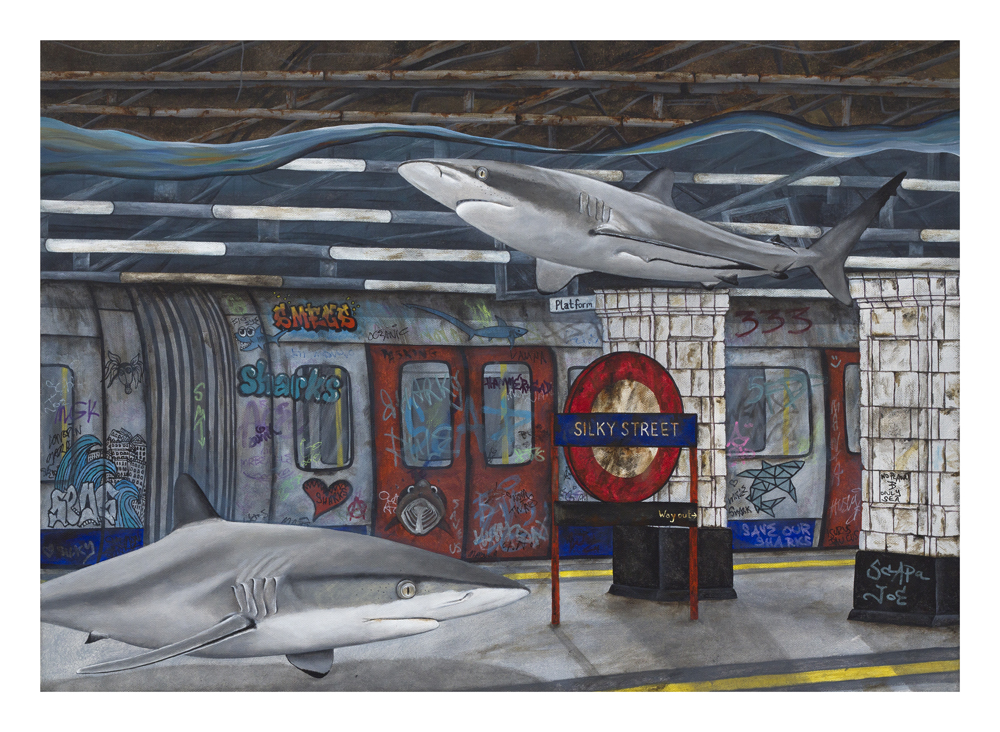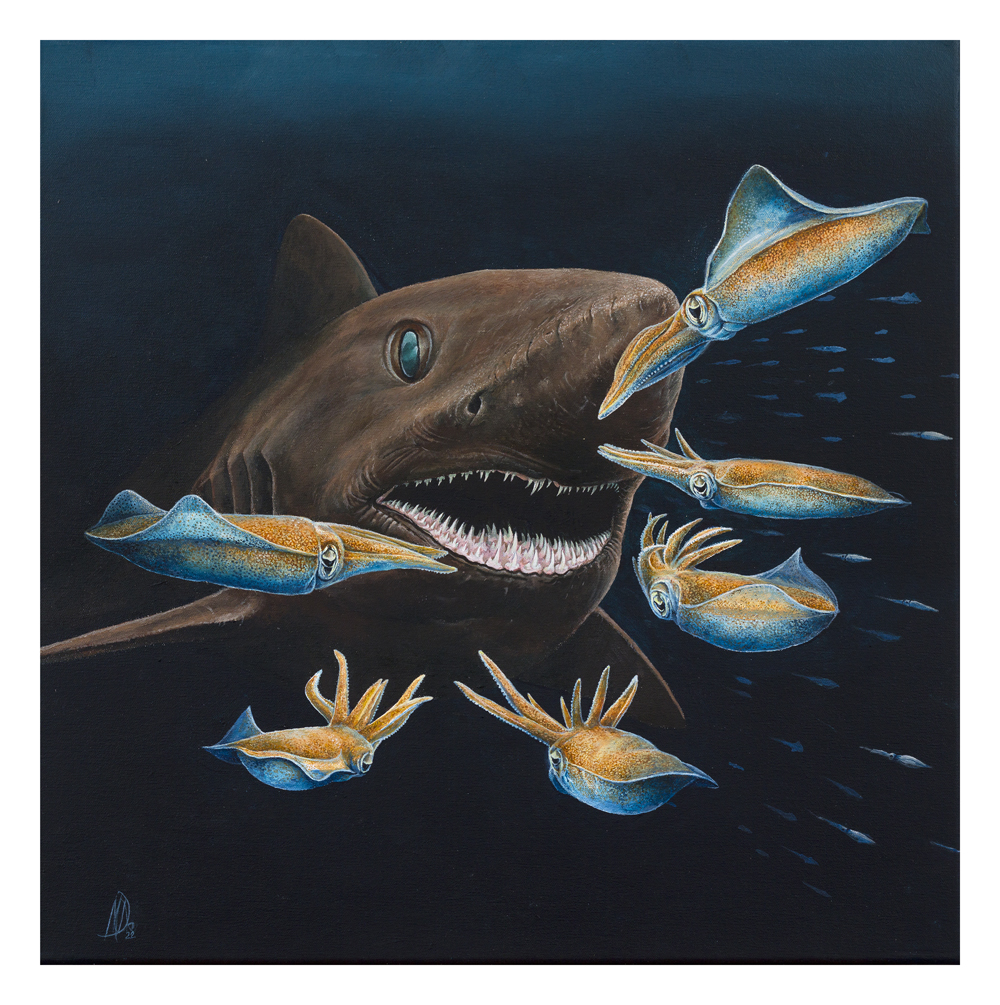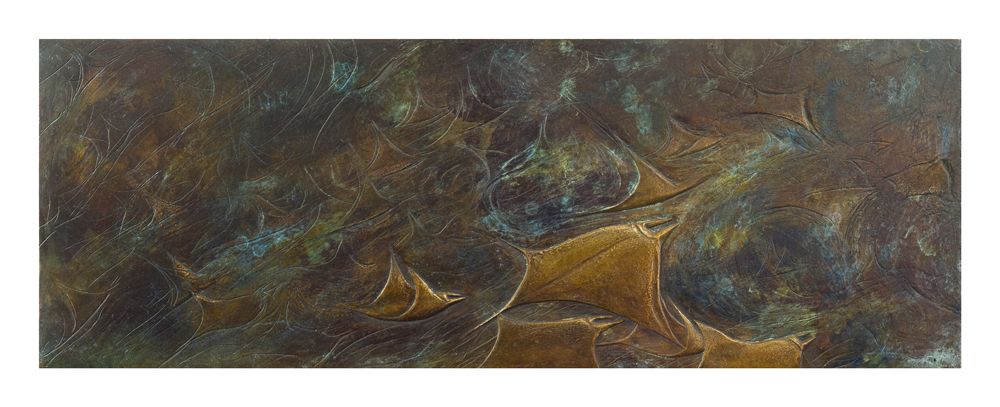Marine Life & Conservation
Oceanic 31 – A brand new shark art exhibition from the Shark Trust
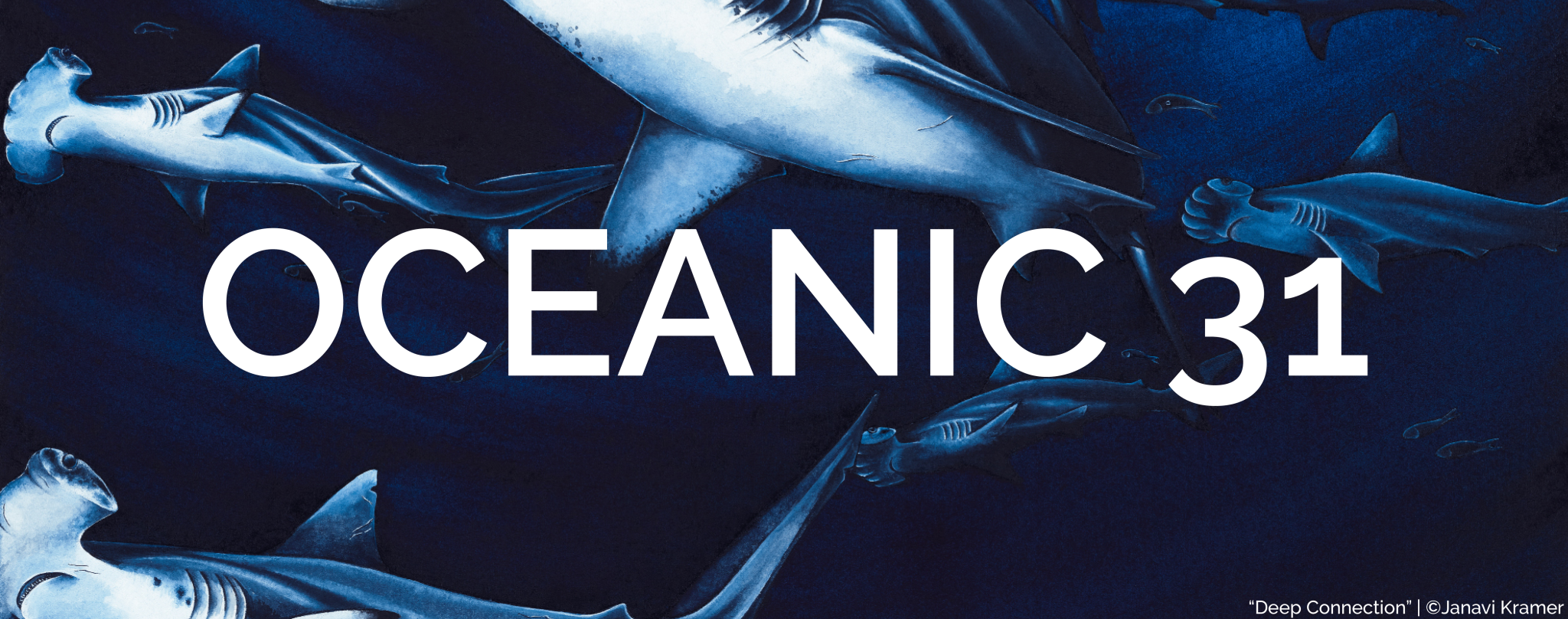
 The Shark Trust has brought together a group of artists who are passionate about sharks, conservation, and using art as a tool for positive change. Each of the 31 paintings, drawings, sculptures and digital media represents a species of shark or ray that lives in the open ocean. The exhibition can be visited at venues around the UK and can also be enjoyed virtually. So, however you choose to view Oceanic 31, you can immerse yourself in the wonderful world of sharks and rays. The exhibition is part of the Big Shark Pledge campaign.
The Shark Trust has brought together a group of artists who are passionate about sharks, conservation, and using art as a tool for positive change. Each of the 31 paintings, drawings, sculptures and digital media represents a species of shark or ray that lives in the open ocean. The exhibition can be visited at venues around the UK and can also be enjoyed virtually. So, however you choose to view Oceanic 31, you can immerse yourself in the wonderful world of sharks and rays. The exhibition is part of the Big Shark Pledge campaign.
Why 31?
2021 saw a review of the status of 31 oceanic shark and ray species. Of the 31 species reviewed, 24 are threatened with extinction according to the IUCN Red List. Some of these species are famous – like the Great White or Whale Shark. But others, like the Pygmy Longhorned Devil Ray – aren’t quite so well known. Featuring all 31 in this exhibition is a great way to showcase just how varied and amazing oceanic sharks and rays are.
Why Oceanic?
Oceanic means relating to the high seas, a.k.a., the open ocean. The species featured within Oceanic 31 all spend a large amount of time during their life in the open ocean. These are the international waters beyond country borders, outside of normal jurisdiction and, crucially, at heightened risk from overexploitation due to a lack of agreed management and/or enforcement of regulation.
What can you do?
The Big Shark Pledge is at the heart of an ambitious campaign. By adding your voice, we can build one of the biggest campaigning communities in the history of shark conservation. To put pressure on governments and fisheries. And make the positive changes required to safeguard these awesome sharks and rays. This will be a long-term collaborative and international effort. Forging a pathway to rebuild populations of high seas sharks and rays. By putting science at the heart of shark conservation and fisheries management. And catalysing the vital changes needed to set populations on the road to recovery.
Paul Cox, Shark Trust CEO, said “This exhibition gives us the opportunity to reach out to a new audience. And inspire more people with the wonderful sharks and rays on which our Big Shark Pledge campaign is based. We are immensely grateful to the 31 artists who have worked so hard to create these works and to Trebah Gardens for giving us an opportunity to bring them together for the first time.”
Oceanic 31 will be on display at Trebah Garden, near Falmouth, until the July 15th, 2023. The exhibition will then move to the Blue Planet Aquarium between Friday 25th August until Monday 4th September.
Oceanic 31 is planned to tour the UK over coming 18 months. Watch out for more dates and venues on the Shark Trust website. Unable to attend in person? The Shark Trust has launched a 360° virtual exhibition. No matter where you are in the world, you can experience the awe-inspiring artwork from the comfort of your own space.
Limited edition prints of some of the artwork are available to buy, and you can even buy a raffle ticket, or attend the final auction, to have the chance of owning an original! All profits will go towards the Shark Trust Big Shark Pledge campaign, working to protect the magnificent sharks and rays that swim in the high seas.
Blogs
Invitation from The Ocean Cleanup for San Francisco port call

6 years ago, The Ocean Cleanup set sail for the Great Pacific Garbage Patch with one goal: to develop the technology to be able to relegate the patch to the history books. On 6 September 2024, The Ocean Cleanup fleet returns to San Francisco bringing with it System 03 to announce the next phase of the cleanup of the Great Pacific Garbage Patch and to offer you a chance to view our cleanup system up-close and personal.
We look forward to seeing you there.
To confirm your presence, please RSVP to press@theoceancleanup.com
PROGRAM
Join The Ocean Cleanup as our two iconic ships and the extraction System 03 return to San Francisco, 6 years and over 100 extractions after we set sail, to create and validate the technology needed to rid the oceans of plastic.
Our founder and CEO, Boyan Slat, will announce the next steps for the cleanup of the Great Pacific Garbage Patch. Giving you a chance to view our cleanup system and the plastic extracted.
Hear important news on what’s next in the mission of The Ocean Cleanup as it seeks to make its mission of ridding the world’s oceans of plastic an achievable and realistic goal.
Interviews and vessel tours are available on request.
PRACTICALITIES
Date: September 6, 2024
Press conference: 12 pm (noon)
Location: The Exploratorium (Google Maps)
Pier 15 (Embarcadero at Green Street), San Francisco, CA
Parking: Visit The Exploratorium’s website for details.
RSVP: press@theoceancleanup.com
Video & photo material from several viewing spots around the bay
We look forward to seeing you there!
ABOUT THE OCEAN CLEANUP
The Ocean Cleanup is an international non-profit that develops and scales technologies to rid the world’s oceans of plastic. They aim to achieve this goal through a dual strategy: intercepting in rivers to stop the flow and cleaning up what has already accumulated in the ocean. For the latter, The Ocean Cleanup develops and deploys large-scale systems to efficiently concentrate the plastic for periodic removal. This plastic is tracked and traced to certify claims of origin when recycling it into new products. To curb the tide via rivers, The Ocean Cleanup has developed Interceptor™ Solutions to halt and extract riverine plastic before it reaches the ocean. As of June 2024, the non-profit has collected over 12 million kilograms (26.4 million pounds) of plastic from aquatic ecosystems around the world. Founded in 2013 by Boyan Slat, The Ocean Cleanup now employs a broadly multi-disciplined team of approximately 140. The foundation is headquartered in Rotterdam, the Netherlands, and opened its first regional office in Kuala Lumpur, Malaysia, in 2023.
Find out more about The Ocean Cleanup at www.theoceancleanup.com.
Marine Life & Conservation
SHARK MONTH ARRIVES AT ROYAL WILLIAM YARD, PLYMOUTH

A shark has been spotted approaching Royal William Yard in Plymouth, much to the surprise of swimmers, paddleboarders and onlookers.
With its distinctive dorsal fin cutting through the water, the sizeable shark swam along the coastline, before turning to head inland towards Firestone Arch at Royal William Yard. The appearance drew a crowd, who were captivated for more than an hour by the unusual sight – and it was all caught on video.
The shark is one of many expected sightings at Royal William Yard over the coming weeks… because today marks the start of Shark Month!
In reality, the ‘shark’ spotted along the Plymouth shoreline was actually a custom-made model, created by the team at Royal William Yard and sailed underwater by Caroline Robertson‑Brown from the Shark Trust, who donned scuba diving gear for the occasion.
The stunt took place to launch Shark Month in style and draw attention to the work of the leading international conservation charity, which is based in Britain’s Ocean City. Spectators were reassured that the water was safe and many entered into the spirit of the performance, swimming or sailing alongside the shark.
Shark Month will take place across Royal William Yard throughout July and will feature an extravaganza of art, entertainment and advocacy for everyone to enjoy. The packed programme of events starts with an art exhibition and ends with a trip on paddleboards with shark experts – with everything from a shark quiz to a Jaws screening in between.
Paul Cox, CEO of the Shark Trust, said: “There are often assumptions and misconceptions when it comes to sharks. This was certainly the case with the shark spotted at Royal William Yard! While the British coastline is home to many species of shark, this was not one of them. However, we’re thrilled it caught people’s attention, because seeing a shark is a special and memorable moment. That is precisely why we want to celebrate these incredible creatures, highlight the need for conservation, and ask for help to safeguard their future.”
For more information about Shark Month at Royal William Yard, visit the Shark Trust Website.
Images and video: Jay Stone
-

 Blogs2 months ago
Blogs2 months agoDiving With… Nico, Ocean Earth Travels, Indonesia
-

 News1 month ago
News1 month agoMurex Bangka Announce New Oceanfront Cottages & Beachfront Dining
-

 Blogs2 months ago
Blogs2 months agoA new idea in freediving from RAID
-

 Marine Life & Conservation1 month ago
Marine Life & Conservation1 month agoIceland issue millionaire whale hunter a licence to murder 128 vulnerable fin whales
-

 Marine Life & Conservation2 months ago
Marine Life & Conservation2 months agoThe Shark Trust Great Shark Snapshot is back
-
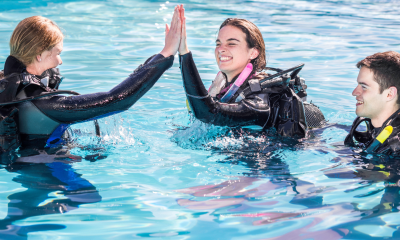
 News3 months ago
News3 months agoCharting New Waters; NovoScuba Goes Global with the Launch of their Revolutionary Dive Training Agency!
-

 Gear News1 month ago
Gear News1 month agoNew Suunto Ocean – a dive computer and GPS sports watch in one for adventures below and above the surface
-

 Marine Life & Conservation Blogs2 months ago
Marine Life & Conservation Blogs2 months agoBook Review: Plankton


